SPACEFLIGHT 2022 space highlights
Space in 2022
The RAeS SPACE SPECIALIST GROUP look ahead to the most significant crewed and uncrewed missions and space news this year.
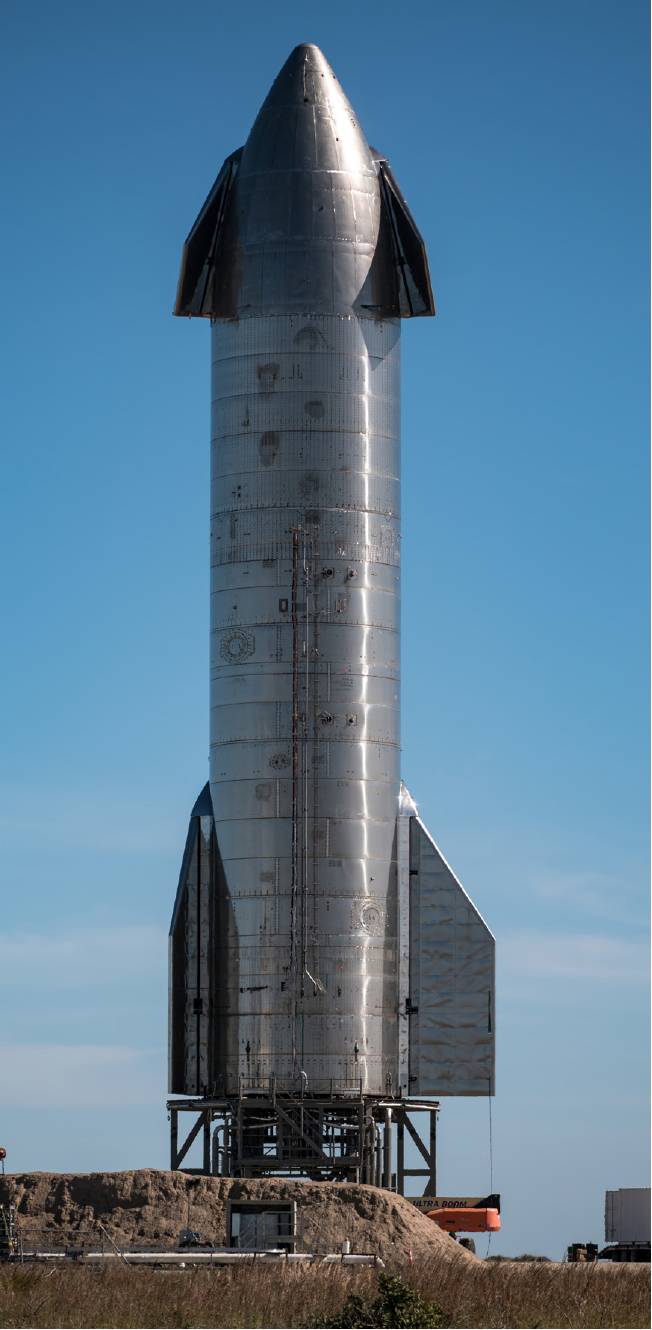 SpaceX’s Starship SN9 rocket sitting on the launch pad. Jared Krahn
SpaceX’s Starship SN9 rocket sitting on the launch pad. Jared Krahn
Helicopters on Mars would have to be one of the stand-out highlights for 2021. It is one of those moments that sets a new benchmark. Rovers on Mars are all well and good – but helicopters? That takes things to a new level. Ingenuity (or Ginny to its friends) has now clocked up almost half an hour of flight time and travelled over 3km (See Flying over Mars, June 2021, p34).
For sure, the year had other ‘moments that mattered’ too. The US finally returned to crewed spaceflight (in several ways) after so many years’ absence following the shuttle’s retirement. China became the second nation ever to successfully put a rover on Mars (a genuinely impressive achievement even while the limelight is being stolen by little Ginny). ESA’s robotic arm finally made it to the ISS. As for the long-awaited James Webb Space Telescope? More of that later.
So, what does 2022 promise? This will be a year of super-heavy launchers, lunar congestion and the opening metaphorical shots in the satellite communications ‘battle of the orbits’.
Following Russia’s recent anti-satellite (ASAT) missile test, hopefully, we will not see any further real shots taken – at any altitude.
Science and exploration
By the time this article reaches you, the long-awaited James Webb Space Telescope (JWST) should be in orbit (launch scheduled in December 2021). JWST is widely regarded as the successor to the famous Hubble Space Telescope (HST) which is now in its 30s – a long life for any spacecraft. JWST’s focus is on infrared observation and it will be just as much of a revelation as HST was before it. It is more than 15 years late into orbit and more than five times over original budget but hopefully worth the wait.
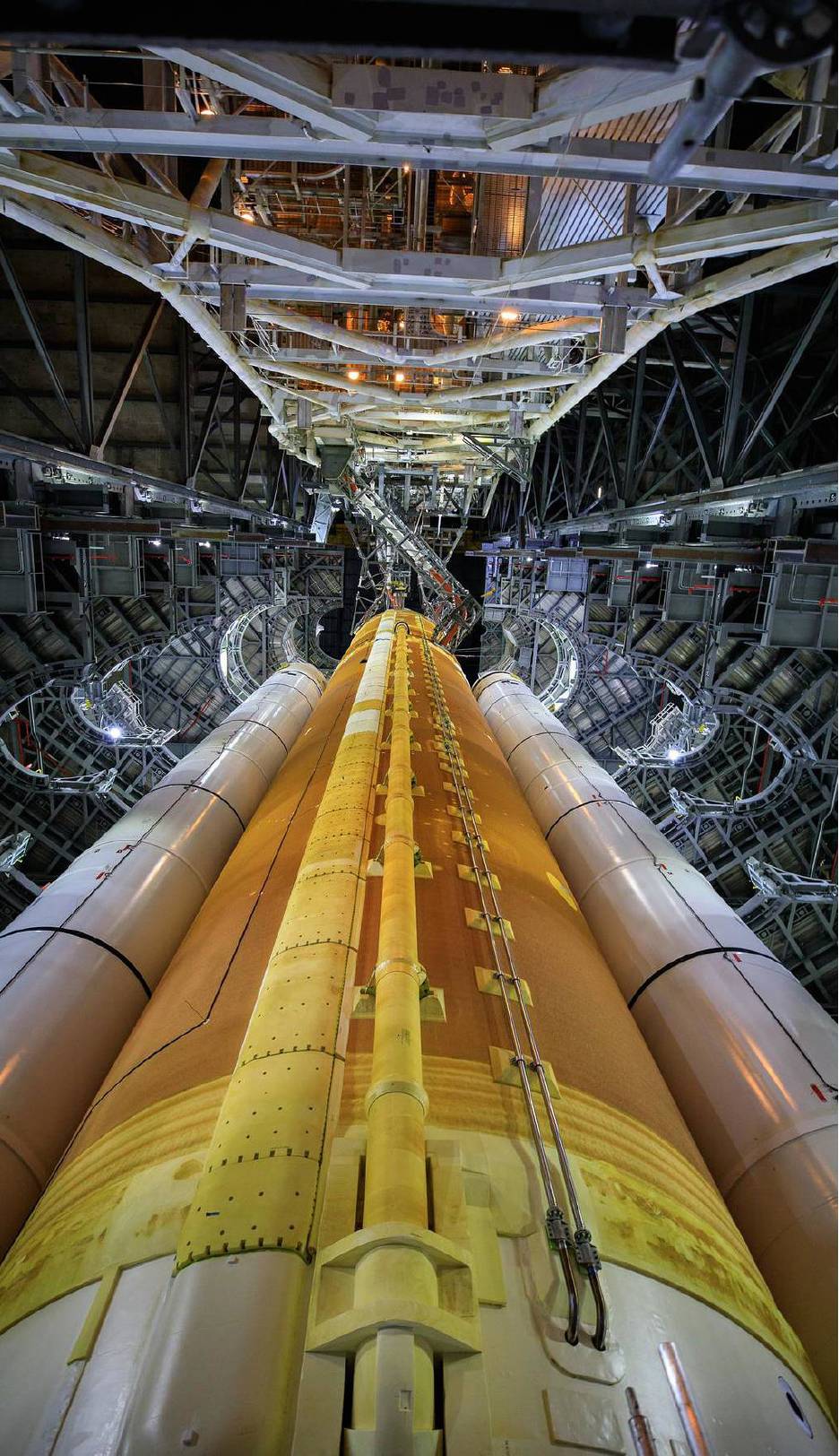 A closeup view of the SLS rocket for Artemis I inside High Bay 3 of NASA’s Vehicle Assembly Building (VAB). NASA
A closeup view of the SLS rocket for Artemis I inside High Bay 3 of NASA’s Vehicle Assembly Building (VAB). NASA
The US’ persistence in seeing the mission through at such expense may suggest technology crossover with national security programmes. There is widespread conjecture that Hubble and the NRO’s classified ‘KeyHole-11’ series of spy satellites share much in common. The technology enabling JWST’s super-sized reflector and sensors must have its uses for national security too.
The second of ESA’s two ExoMars missions lifts off in 2022. The earlier mission, in 2016, placed the Trace Gas Orbiter in orbit around Mars, along with a lander (Schiaparelli). That lander appears to have crash-landed but the orbiter has continued to operate successfully.
It has helped to locate a suitable landing site for the second mission and also carries a communications relay.
The later mission carries the UK-built Rosalind Franklin rover which will be brought to the surface in 2023 by a Russian lander named Kazachok (‘Little Cossack’). The planned landing site is in an area called Oxia Planum – in the same neighbourhood as 1997’s Sojourner rover and the much earlier Viking-1.
NASA’s Psyche mission – billed as a ‘Journey to a metal world’ – will head to the asteroid ‘16 Psyche’. The 200km wide asteroid is suspected to be the metal core of an early planet, stripped of its outer layers during the formation of the Solar System. The probe will arrive in 2026.
Meanwhile, much nearer the Sun, ESA’s Solar Orbiter and NASA’s Parker Solar Probe continue their ever closer (and hotter) observations of our friendly neighbourhood star. Parker periodically swings in very close to the Sun before retreating in a highly elliptical orbit. At its closest, it now reaches less than 9m km from the Sun’s ‘surface’. That may still seem like a long way – but consider that Earth orbits at 150m km.
Crewed space
The nature of ‘crewed space’ is now shifting. Richard Branson, Jeff Bezos and William Shatner all made their way into space in 2021 (setting aside any debate over altitude requirements for ‘astronaut wings’). We can now expect things to pick up pace – as well as altitude and range – with private money flowing in to fuel the adventure.
The International Space Station is also a busy place in 2022. Some 15 launches to the space station are planned within the year – and it is no longer the reserve of Russian Soyuz and Progress vehicles. Those still feature but are joined by the SpaceX Cargo Dragon and Crew Dragon, the Orbital Science’s Cygnus supply vehicle and Boeing’s new CST-100 Starliner crewed vehicle.
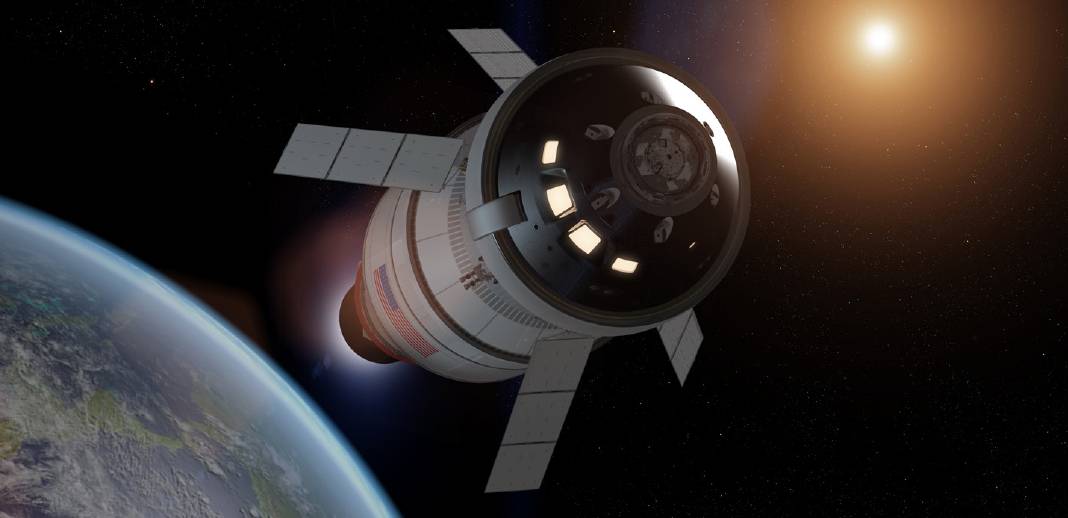 An artist’s concept of the Orion spacecraft. NASA
An artist’s concept of the Orion spacecraft. NASA
We have seen the last of the famous space shuttle – but its smaller cousin, the uncrewed X-37B, continues to fly military missions of an undisclosed nature. The only X-37B known to be flying at present is likely to end its current mission in mid-2022. This sixth mission was launched on 17 May 2020. The fourth and fifth X-37B missions returned to Earth after about two years in space, making the second or third quarter of 2022 the likely timeframe for mission 6 to end. The missions are said to be used to test new space technologies but most of the details are classified.
China also plans to launch half a dozen or so crewed and uncrewed spacecraft in 2022 to complete the assembly of its Tianhe-1 space station. One of the year’s highlights will be the return in April of the three current Chinese taikonauts, Wang Yaping, Zhai Zhigang and Ye Guangfu, after six months on board Tianhe-1 – by far the longest stay in space for Chinese taikonauts to date.
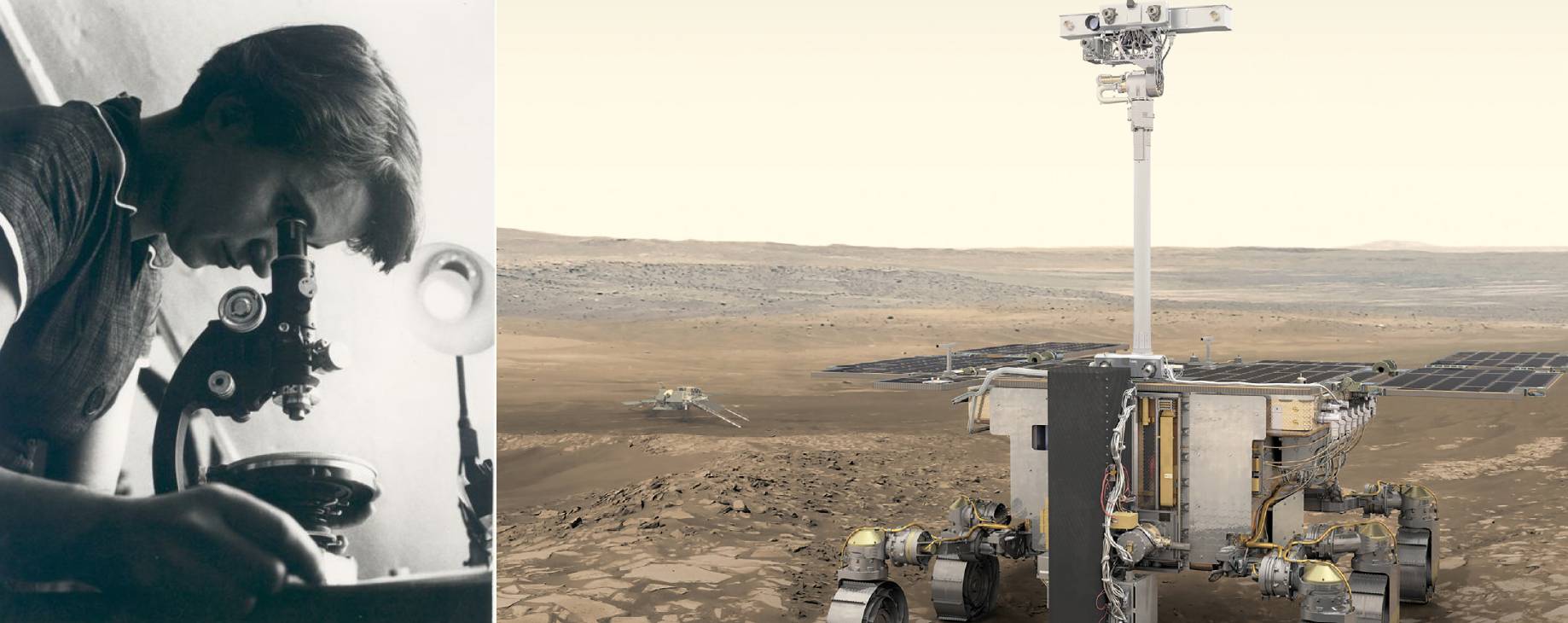 Rosalind Franklin, the celebrated English chemist and X-ray crystallographer at work after whom the UK’s Mars rover is named; the Rosalind Franklin rover that will search for life on Mars.
Rosalind Franklin, the celebrated English chemist and X-ray crystallographer at work after whom the UK’s Mars rover is named; the Rosalind Franklin rover that will search for life on Mars.
Navigation
The EU’s Galileo satellite navigation programme continues its rollout and upgrades. A new set of Open Service features dubbed ‘Navigation Message Authentication' (OS-NMA) are now entering a trial period. OS-NMA is designed to make it harder for the messages to be faked by criminals. Deployment of the GPS ‘M-Code’ – a military-use signal with a more comprehensive form of protection – continues through 2022.
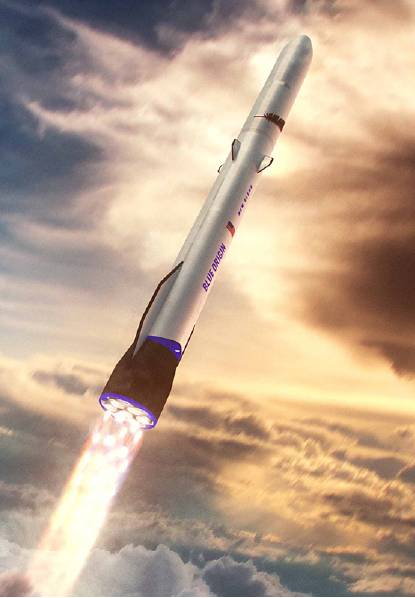 Blue Orgin’s heavy-lift launch vehicle New Glenn, named after celebrated US astronaut John Glenn. NASA
Blue Orgin’s heavy-lift launch vehicle New Glenn, named after celebrated US astronaut John Glenn. NASA
Meanwhile, a range of other actors are developing or deploying navigation capabilities to meet the needs of specific customer groups. US company Xona and UK-headquartered OneWeb are seeking to join Iridium’s Satelles service in providing commercial ‘position, navigation and time’ (PNT) services.
Following Brexit, the UK space agency embarked upon a series of studies to examine how a national system might be fielded. With PNT taking an ever-more central role in the healthy functioning of critical national infrastructure, it was felt necessary to replace what was being lost in access to Galileo’s secure ‘Public Regulated Service’ (PRS). However, despite several years of study, the UK government appears little closer to concluding how to fix its problem. The UKSA’s Space-Based PNT Programme (SBPP) examined a range of solutions through 2021. The path forward in 2022 remains unclear.
Lunar – Watch out Moon… here comes 2022!
China has been in the vanguard of a return to the Moon over the last couple of years. This coming year, the US, Russia, India, Japan, South Korea, the UK, Mexico and the UAE are all heading there in one way or another.
Descending to the surface will be a collection of spacecraft, including Russian lander (Luna 25), three American landers (Two Nova-C’ and Peregrine), an Indian lander (Chandrayaan-3) and two Japanese landers (Hakuto-R Mission 1 and another called SLIM). An Emirati rover (Rashid) will be carried aboard the Hakuto-R. Peregrine will carry several miniature rovers supplied from the UK, Mexico and others. Throw in a few more orbiters for good measure and it is going to be a busy place.
In a return to the massive launchers of the Apollo era, the super-heavy class Space Launch System (SLS) will make its maiden flight in February with an uncrewed Orion spacecraft on the top. SLS is a key development in the US-led Artemis programme, aiming to return humans to the Moon in the mid-2020s. The Artemis-1 flight will circle the Moon several times without landing before returning to Earth.
Launch
The international launch market remains a dynamic place. While recent years have seen a metaphorical explosion of small launchers, 2022 will see some new ‘big beasts’ enter the scene.
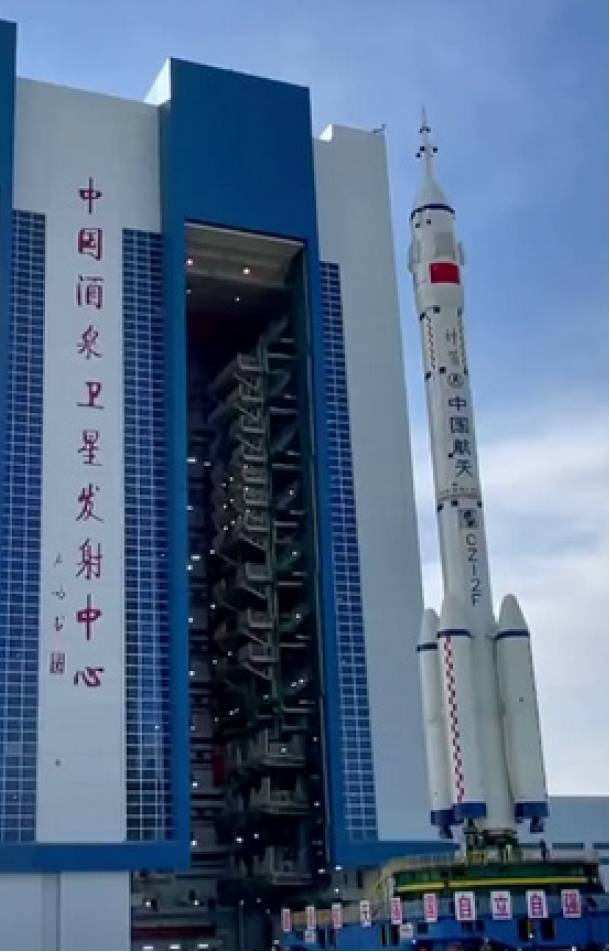 Launch vehicle vertical assembly building in Jiuquan Satellite Launch Center in China. CNS
Launch vehicle vertical assembly building in Jiuquan Satellite Launch Center in China. CNS
We may see maiden launches of the FrancoESA Ariane 6, the US Vulcan Centaur and Japan’s H3. Those are all considered large launchers but they are eclipsed in scale by the Space Launch System (SLS) and SpaceX’s Starship, both of which are gunning for first flight this coming year. Both are classed as ‘super-heavy’ launchers. While SLS is aimed at the US return to the Moon, Starship is aimed at the commercial launch market (and beyond). With a payload greater than 100 tonnes to low Earth orbit, Starship and its massive first stage (known as ‘Super Heavy’) may change the way people access space.
Both SLS and Starship face challenges – SLS’s were highlighted in a 16 November 2021 report by the NASA Inspector General, while Starship’s triggered a 26 November 2021 email from Elon Musk to his staff warning that SpaceX’s financial viability was on the line.
The world’s most powerful operational launcher, SpaceX’s Falcon Heavy, has not launched since June 2019 but is due to be launched five times in 2022. Three missions will launch classified payloads for the US Department of Defence, a fourth will carry NASA’s Psyche into deep space (see Science & Exploration, above) and the fifth will launch the commercial Viasat-3 broadband satellite.
Further entries to the small launch market will also be made, including India’s Small Satellite Launch Vehicle (SSLV). With a fair wind, the UK might see a first lift-off from home soil. Ambitions remain for a 2022 UK spaceport launch but a site inspection of the candidate vertical launch sites might leave you wondering if you’re in the right place, as we enter the year. There’s a lot still to do before the pads are ready.
The small launch market may be due some consolidation over the next few years. With so many small launchers coming to market, it remains to be seen if ‘responsive’ small launch providers will pull in the customers while the likes of SpaceX are pulling down the ‘cost per kg’.
Communications satellites
Perhaps 2022 will begin to show where the balance of power will be in the emerging LEO vs GEO battle. For many years, satellite communications has been dominated by large satellites in geostationary earth orbits (GEO).
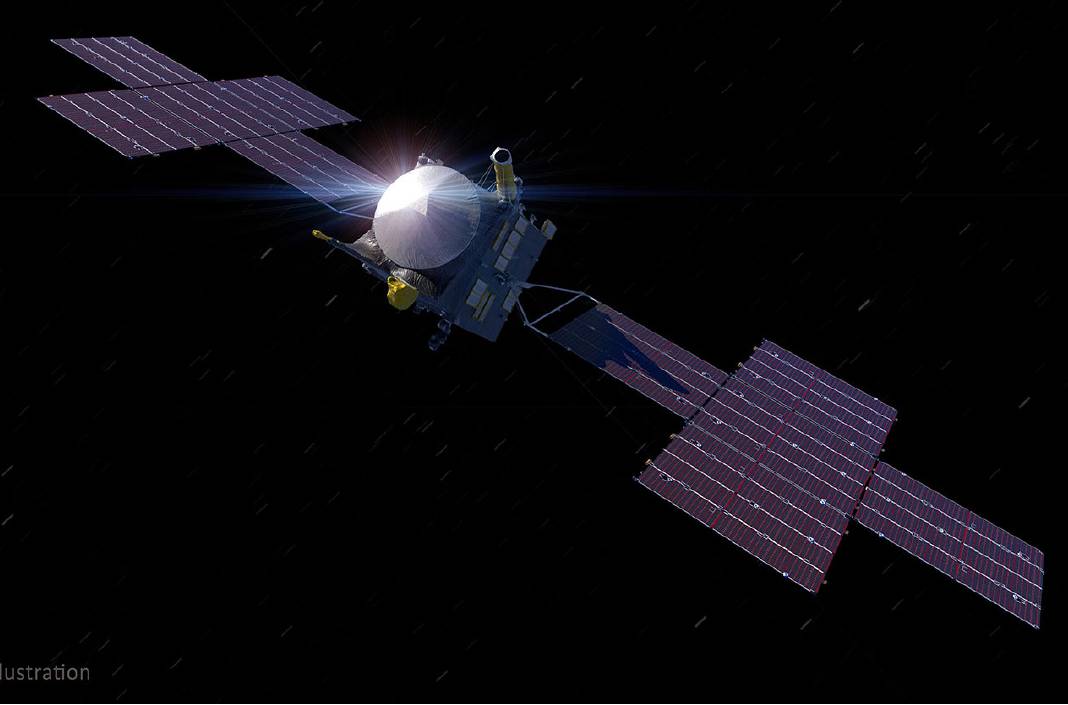 The Psyche spacecraft will journey to a unique metal asteroid orbiting the Sun between Mars and Jupiter. NASA
The Psyche spacecraft will journey to a unique metal asteroid orbiting the Sun between Mars and Jupiter. NASA
The unique character of GEO makes it efficient to serve a fixed area on the ground with a small number of large, highly capable spacecraft. Mega-constellations, in low Earth orbit (LEO), now threaten that paradigm. Using hundreds or even thousands of small satellites, they aim to provide high bandwidth services with substantially lower latency. O3B, OneWeb and Starlink are all thrusting into the market with new offerings.
OneWeb aims to have reached a global service within the year; Starlink currently offers a ‘beta’ service which can top 150 megabits per second. The more established players in the satcomms scene are beginning to hedge their bets, by bringing LEO offerings into their business models. In the process, consolidation is on the cards in a relatively fragmented market. The recent buyout of Inmarsat’s slice by Viasat will likely complete in 2022. These are two big names coming together. Even so, the result still leaves a lot of cake for others.
The viability of LEO mega-constellations – and the customer pulling power of low-latency satcomms – remains to be proven as a commercial success. Nevertheless, these constellations are technically nimble. The traditional space sector model of ‘everything right on the first shot’ no longer applies. SpaceX’s Starlink is described with version numbers and beta releases – terms more redolent of the software world than that of space systems. Let battle commence.
 SpaceX’s Starship SN9 rocket sitting on the launch pad. Jared Krahn
SpaceX’s Starship SN9 rocket sitting on the launch pad. Jared Krahn




